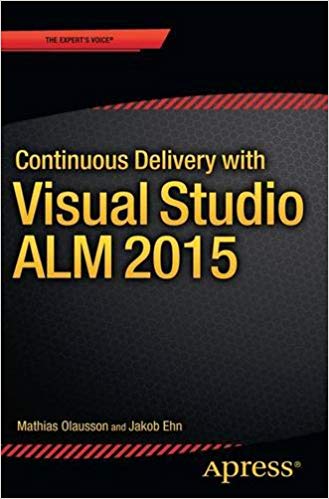With today’s announcement at Microsoft Connect() about the public preview of the next generation of Visual Studio Release Management, it is also time to announce the (imminent) release of a new book that covers among other things this new version of RM.
Me and my fellow ALM MVP Mathias Olausson have been working hard during the last 6 months on this book, using early alpha and beta versions of this brand new version of Visual Studio Release Management. Writing about a changing platform can be rather challenging, and our publisher (Apress) have been very patient with us regarding delays and late changes!
About the bookThe book is titled Continuous Delivery with Visual Studio ALM 2015 and is aiming to be a more practical complement to Jez Humble’s seminal Continous Delivery book with a heavy focus of course on how to implement these processes using the Visual Studio ALM platform. The book discusses the principles and practices around continuous delivery and continuous deployment, including release planning, source control management, build and test automation and deployment pipelines. The book uses a fictive sample application that we use throughout the book as a concrete example on how to go about to implement a continuous delivery workflow on a real application. We hope that you will find this book useful and valuable! AbstractThis book is the authoritative source on implementing Continuous Delivery practices using Microsoft’s Visual Studio and TFS 2015. Microsoft MVP authors Mathias Olausson and Jakob Ehn translate the theory behind this methodology and show step by step how to implement Continuous Delivery in a real world environment. Building good software is challenging. Building high-quality software on a tight schedule can be close to impossible. Continuous Delivery is an agile and iterative technique that enables developers to deliver solid, working software in every iteration. Continuous delivery practices help IT organizations reduce risk and potentially become as nimble, agile, and innovative as startups. In this book, you’ll learn:
Table of ContentChapter 1: Introduction to Continuous Delivery |
 |